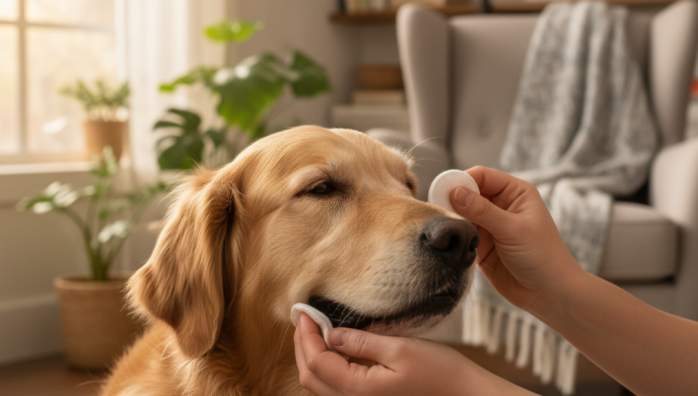Home Ear Cleaning for Your Dog
by admin in Pet Care Basics 14 - Last Update November 17, 2025

I\'ll be honest, for years I was nervous about cleaning my dog\'s ears at home. I have a floppy-eared Golden Retriever, and I was always worried I\'d push debris further in or, even worse, hurt him. The constant head shaking and occasional whining broke my heart, but the thought of doing it myself was intimidating. It wasn\'t until I sat down with my vet and had her walk me through the process that I realized how simple and essential this part of grooming really is. Now, it\'s a calm, bonding part of our routine.
Why regular ear cleaning is a game-changer
For many dogs, especially breeds with long, floppy ears like Beagles, Cocker Spaniels, or my own retriever, the ear canal doesn\'t get much air circulation. This creates a warm, moist environment that\'s a perfect breeding ground for yeast and bacteria. Regular, gentle cleaning helps to remove excess wax and debris, preventing painful and costly infections before they can even start. It also gives me a chance to inspect his ears for any early warning signs like redness, swelling, or strange odors.
The signs it\'s time for a clean
Your dog will usually tell you when their ears are bothering them. I learned to watch for these key signals with my own pup:
- Persistent head shaking or tilting to one side.
- Scratching or pawing at the ears.
- A noticeable, often yeasty or unpleasant, odor coming from the ear.
- Redness or swelling inside the ear flap.
- Visible discharge that looks dark brown, black, or yellowish.
- Sensitivity or pain when you touch their ears.
If you see these signs, it\'s a good indicator that a cleaning is due. However, if the signs are severe or you suspect an active infection, my best advice is to hold off on cleaning and see your vet first. Cleaning an infected ear can sometimes make it worse.
My step-by-step guide to safe ear cleaning
Once you get the hang of it, the process is quick and stress-free. The key for me was creating a calm atmosphere and having everything ready before I even brought my dog over. Here\'s the simple routine that works for us.
First, gather your supplies
You don\'t need much, but using the right tools is critical. I always have these on hand:
- A high-quality, vet-approved ear cleaning solution. Please don\'t use water, alcohol, or peroxide, as these can cause serious irritation.
- Clean cotton balls or soft gauze pads. I never, ever use cotton swabs (like Q-tips), as they can easily damage the eardrum.
- A towel to catch any mess (because they will shake their head!).
- Plenty of high-value treats to make it a positive experience.
The cleaning process
- Get comfortable: I have my dog sit between my legs on the floor. It keeps him secure and calm. I spend a minute just petting him and praising him before we start.
- Apply the cleaner: Gently hold the ear flap up to straighten the ear canal. I then squeeze the recommended amount of cleaning solution directly into the ear canal until it\'s full.
- Massage the ear base: This is the most important step! I gently massage the base of his ear for about 20-30 seconds. You should hear a squishing sound, which means the solution is working its magic, breaking up wax and debris deep inside.
- Let them shake: Step back and let your dog shake their head vigorously! This is what brings all the gunk up from the canal. The towel comes in handy here.
- Wipe it clean: Take your cotton ball or gauze pad and gently wipe away all the visible debris and excess solution from the outer part of the ear and the entrance to the canal. I only go as far as my finger can comfortably reach.
- Reward, reward, reward: The second we\'re done, I shower him with praise and his favorite treats. This ensures he always associates ear cleaning with something good.
Doing this regularly has made a huge difference in my dog\'s comfort. It\'s a simple act of care that strengthens our bond and keeps him happy and healthy. Remember, this is my experience with routine cleaning; if you ever suspect a real problem, your veterinarian is your most trusted resource.










